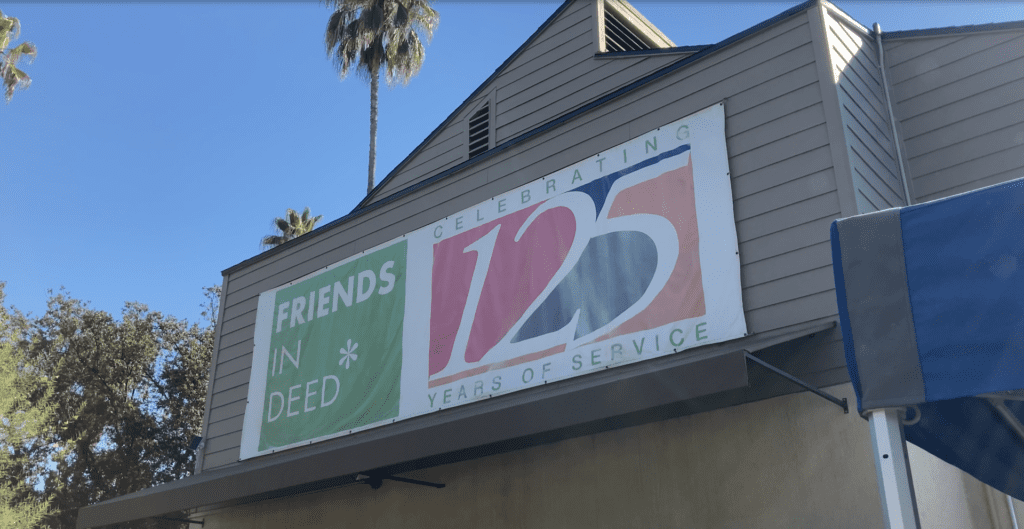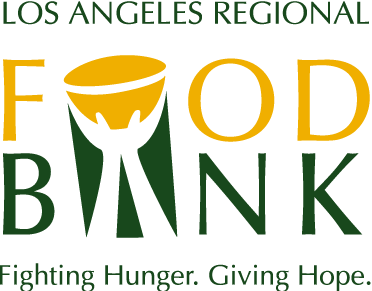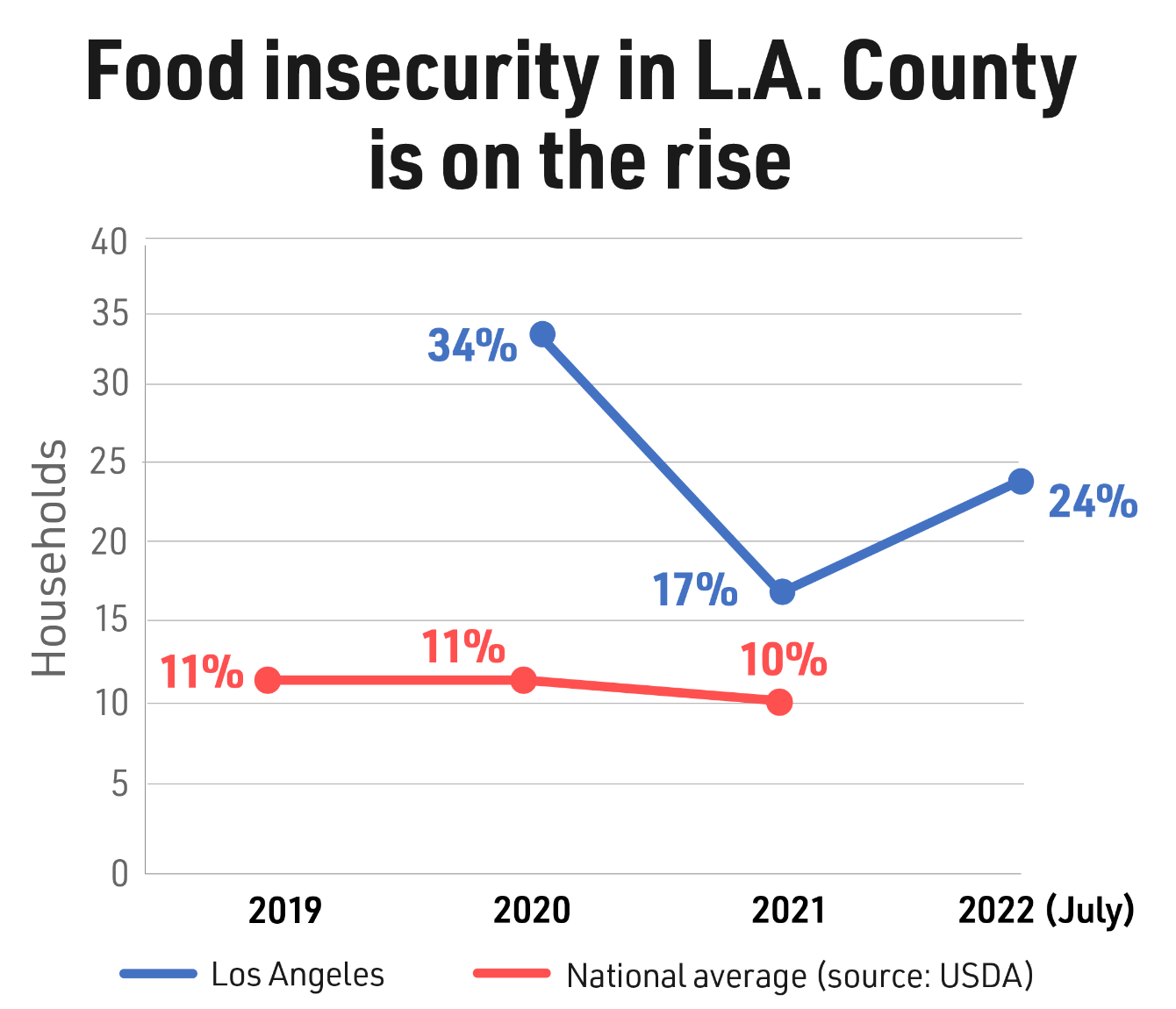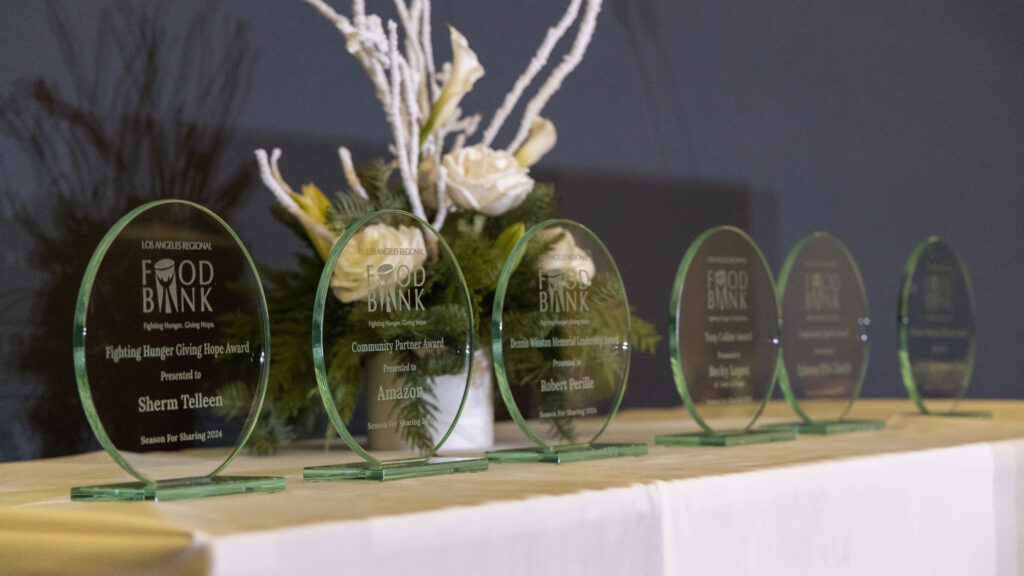USC Study Finds Rates of Food Insecurity in LA are Spiking After Sharp Decline
USC Study Finds Rates of Food Insecurity in LA are Spiking After Sharp Decline
Fast Takeaways
- Nearly a quarter of Los Angeles County households experienced food insecurity over the last 12 months — up 7 percentage points since the end of 2021.
- According to the U.S. Department of Agriculture, food prices nationally have gone up 9% in 2022.
- More than 4 out of 10 study participants in L.A. County said they bought less food this year because of the rise in food and grocery prices.
- To save money, 38% said they bought foods that were lesser in quality.
Food Insecurity is Spiking Again, According to USC Dornsife
The Los Angeles Regional Food Bank was seeing more people who were impacted by the pandemic’s economic and health impacts, but now it’s shifted to the impact of inflation. Now, in October of 2022, the unemployment rate was closer to 5% locally compared to roughly 10% two years ago in October of 2020, yet. However, the number of people seeking food assistance from the LA Regional Food Bank and Food Bank partner agencies has only come down slightly from the top of the pandemic, when unemployment in LA County was around 20%. With unemployment numbers coming down, one might expect the need for food assistance also to go down. That is not what is happening based on Food Bank distribution numbers and the USC Dornsife study, which finds a dramatic increase in food insecurity in LA County.
Some Families Resort to Two Meals Per Day Instead of Three
While visiting partner agency Friends In Deed, one of the people interviewed (who did not want to be on video) told us that she and her husband went from three meals per day down to two because food was too expensive. Fortunately, she and her husband receive food from Friends In Deed, which makes putting healthy food on the table much easier. Unfortunately, this situation is all too common as more people look to cut down on the family budget one way or another. Unfortunately, when it isn’t possible to cut down on medication, utilities, rent or other necessities, food is often the easiest thing to cut.

Cutting meals is particularly dangerous for older adults or other people who are on medication, as often the doses prescribed by doctors need to be taken with food and assume an average daily calorie intake.
The Impact of Prioritizing Calories over Nutrition
The USC Dornsife study also revealed that nearly 40% of the respondents purchased food that is lesser in quality. Unfortunately, healthy food tends to be more expensive, whereas food that is high in sodium, sugar or empty calories tends to be less expensive. This is exacerbating health issues, including obesity, in lower-income communities. The LA Regional Food Bank has been leading the way in providing healthy food to those in need. More than 90% of the food distributed is rated as nutritious, with more than 50% having High Nutritional Content and 40% with Moderate Nutritional Content.
Many people in your community still need your help. Please visit LAFoodBank.org/donate to make a difference today.






